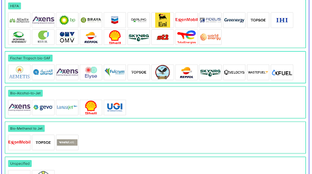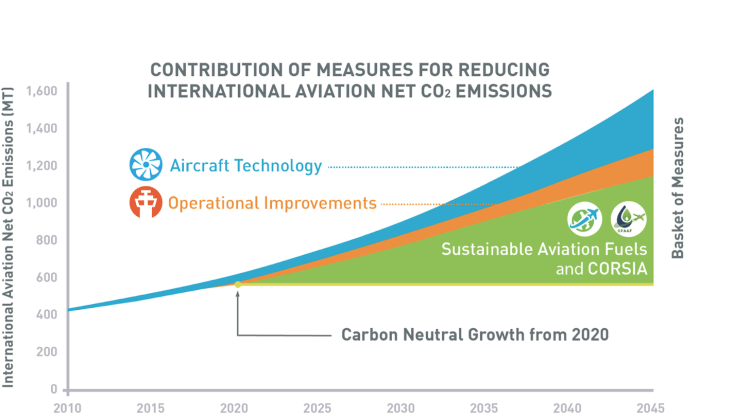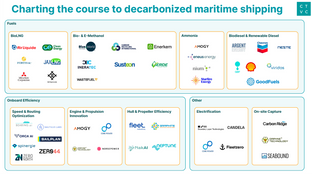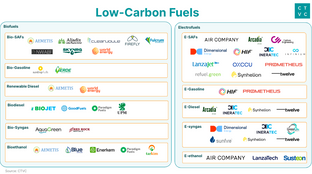
🌏 High-flying fuels
The runway for sustainable aviation fuels
COVID affects airline industry carbon neutrality program
The aviation industry committed to carbon neutral growth with plans that increasingly relied on carbon offsets. The pandemic may change those plans.
Emissions from aviation have long bewildered reduction efforts. Airlines emissions are significant (2.4% of 2018 global GHG emissions) and expected to triple by 2050. Even in the face of tripling demand, there are few levers for decarbonization because jet fuel is particularly difficult to replace with a low-carbon substitute.
Despite the challenge, in 2016 the International Civil Aviation Organization (ICAO) committed to “carbon neutral growth from 2020 [onward].”
ICAO is a United Nations agency whose 193 Member States are charged with ensuring that their local civil aviation operations and regulations conform to ICAO standards. The ICAO’s carbon neutral growth agreement calls for annual fuel efficiency increases of 2% through more efficient aircraft and by developing and deploying alternative jet fuels. The pandemic has accelerated this effort. Many airlines have sped the retirement of less fuel-efficient aircraft, improving the overall performance of their fleets.
The ICAO plan relies heavily on market-based measures, primarily carbon offsets. By 2045, offsets are expected to account for a substantial proportion of carbon neutral “growth.” In contrast to emission-reducing measures like more efficient aircraft and less polluting fuels, offsets permit companies to operate as usual – an attractive option when reducing carbon output is costly or impractical.
Since emissions from international flights are excluded from the UN Framework Convention on Climate Change (UNFCCC), ICAO designed a separate global carbon market to purchase offsets.

Carbon neutral aviation growth will be increasingly supported by CORSIA carbon offsets (ICAO.int)
The offset program, called “CORSIA” (Carbon Offsetting and Reduction Scheme for International Aviation), is to be phased in over several years. Member States can opt in to a voluntary pilot phase from 2021 through 2023.
2019 and 2020 averaged emissions levels determine the baseline from which airlines must then decrease or offset their emissions to avoid exceeding this carbon neutral threshold.
The pandemic could significantly affect this calculation. With air traffic plummeting in 2020 and recovery expected to take months or years, the 2019-2020 emissions average will be much lower than anticipated when agreed on in 2016. The lower baseline would obligate airlines to offset more emissions than they’d expected starting in 2021, coupled with a drop in passenger revenue.
Prior to the pandemic, airlines had expected to gradually phase in emission reduction and offsets measures to accommodate ~3% annual growth.
On March 30, 2020, the International Air Transport Association (IATA), the trade association for the world’s airlines, called on ICAO to change the carbon emissions baseline. IATA recommended that CORSIA measure emissions for 2019 alone, excluding 2020, to determine its baseline. Changing the baseline to only 2019 could save airlines an estimated $15B in reduced carbon offsetting costs, but would eliminate airlines’ offset obligation during the pilot phase. As airlines continue to operate at lower capacities, their emissions will be below 2019 levels, ergo postponing the time when they would be obligated to buy offsets.
A decision about whether to adjust the baseline is expected by the end of June. The two sides are split: airlines depicted this as a matter of survival, and activists claim the airlines are shirking commitments that they already pledged.
Depressed air travel and contentions over baselines may postpone the effect of any offset program for years. As a result, CORSIA should leverage this blip in emissions to look beyond offsets to fundamental technological and operational innovations that could permanently decarbonize the sector. Low and no-emission aircraft that can carry many passengers over long distances are likely years away. Thus, any incremental improvements in efficiency are essential to chipping away at the impact of airline emissions. Now’s the time!
Interested in more content like this? Subscribe to our weekly newsletter on Climate Tech below!

The runway for sustainable aviation fuels

Well-to-wake pathways to cleaner shipping

The cost and complexity challenges of creating drop-in alternative fuels